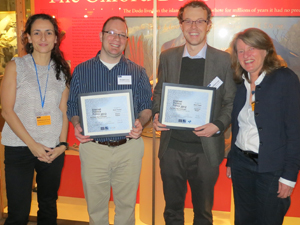
We can't understand, analyse or make public policy without understanding the technological, social and economic shifts associated with the Internet. Image from the (post-PRISM) "Stop Watching Us" Berlin Demonstration (2013) by mw238.
In the journal’s inaugural issue, founding Editor-in-Chief Helen Margetts outlined what are essentially two central premises behind Policy & Internet’s launch. The first is that “we cannot understand, analyse or make public policy without understanding the technological, social and economic shifts associated with the Internet” (Margetts 2009, 1). It is simply not possible to consider public policy today without some regard for the intertwining of information technologies with everyday life and society. The second premise is that the rise of the Internet is associated with shifts in how policy itself is made. In particular, she proposed that impacts of Internet adoption would be felt in the tools through which policies are effected, and the values that policy processes embody. The purpose of the Policy and Internet journal was to take up these two challenges: the public policy implications of Internet-related social change, and Internet-related changes in policy processes themselves. In recognition of the inherently multi-disciplinary nature of policy research, the journal is designed to act as a meeting place for all kinds of disciplinary and methodological approaches. Helen predicted that methodological approaches based on large-scale transactional data, network analysis, and experimentation would turn out to be particularly important for policy and Internet studies. Driving the advancement of these methods was therefore the journal’s third purpose. Today, the journal has reached a significant milestone: over one hundred high-quality peer-reviewed articles published. This seems an opportune moment to take stock of what kind of research we have published in practice, and see how it stacks up against the original vision. At the most general level, the journal’s articles fall into three broad categories: the Internet and public policy (48 articles), the Internet and policy processes (51 articles), and discussion of novel methodologies (10 articles). The first of these categories, “the Internet and public policy,” can be further broken down into a number of subcategories. One of the most prominent of these streams…



